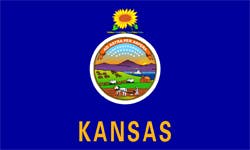As in other parts of the country, Medicare Part D in Kansas provides prescription drug coverage for those who have Medicare health coverage.
Original Medicare usually only covers prescription medications that must be administered by a physician or healthcare provider. Self-administered medications are covered under Medicare Part D. You can get this coverage by enrolling in a standalone Part D plan or a Medicare Advantage Prescription Drug (MA-PD) plan.
Also known as Medicare Part C, Advantage plans must provide the same coverage you get with Original Medicare. However, most of them offer additional benefits, like prescription drug coverage, routine vision or dental care, and hearing aids. Not all Medicare Advantage plans offer the same benefits, so check the plan's coverage carefully when comparing your options.
Private insurance companies contract with Medicare to provide both Part D and Part C plans.
Also, it’s important to note that if you have a Medicare Advantage Prescription Drug plan, you are not eligible to enroll in a standalone Medicare Part D prescription drug plan. If you are already enrolled in Medicare Advantage Prescription Drug plan and you then enroll in a standalone Part D plan, you will be automatically unenrolled from Medicare Advantage and placed back into Original Medicare.
Signing Up for Medicare Part D Coverage in Kansas
As in other parts of the country, those living in Kansas are eligible for Part D coverage as long as they have Medicare Part A and/or Part B and live in the service area of a standalone Part D plan or a Medicare Advantage Prescription Drug plan.
You can only register for or change your Part D enrollment during specific periods.
- Initial Enrollment Period (IEP): For those who qualify for Medicare due to age, your Initial Enrollment Period lasts for 7 months, beginning 3 months before you turn 65 and ending 3 months after your 65th birthday. If you qualify for Medicare due to a disability, your IEP begins 3 months before the 25th month of receiving Social Security disability benefits and continues for 7 months afterward.
- Medicare Advantage Open Enrollment Period (OEP): This goes from January 1 to March 31 every year and is only available to people currently enrolled in a Medicare Advantage plan. During Open Enrollment, you can change from one Medicare Advantage plan to another or switch back to Original Medicare. If making one of these changes leads to you no longer having prescription drug coverage, you may also enroll in a standalone Part D plan.
- Annual Enrollment Period (AEP): This goes from October 15th to December 7th of each year. During this time you can change from Original Medicare to a Medicare Advantage plan, switch from one MA plan to another, leave your MA plan to return to Original Medicare, and sign up for a Part D prescription drug plan.
- Special Election Period (SEP): If you experience certain life changes, you may qualify for an SEP. Common special circumstances include moving and losing your current coverage. You can find the full list on Medicare.gov.
Selecting Medicare Part D Coverage in Kansas
As a Kansas resident, you may wonder what Part D coverage options are available. Coverage and costs vary widely from plan to plan, so compare your Kansas Part D options carefully.
Start by looking at the Part D plan's drug formulary, which is the list of prescription medications covered by the plan. If the formulary does not include your prescriptions, it probably isn't the plan for you. (If your Part D options are limited, review the formulary with your healthcare provider to see if a different medication may work for you.)
Most Part D plans also follow tiered pricing. The least expensive medications are placed on the lower tiers – typically generic drugs – with the most expensive options, like specialty drugs, on the top tiers.
Next you want to look at what your out-of-pocket costs would be under the plan. This includes:
- Monthly premiums
- Annual deductible
- Coinsurance or copays
You may also have late enrollment penalties if you went 63 days or more without creditable prescription drug coverage (i.e. equal to or better than Medicare coverage).
When considering the costs of the plan, look beyond the monthly premium to see the full cost. Often, low premiums are hiding high deductibles or copays.
Finally, look at the pharmacy network. If you need to use a preferred pharmacy to get the best prices, and you don't live or work anywhere near one of the preferred pharmacies, you may want to consider another plan. Or, look to see if the plan allows mail order.
Even if you aren’t currently taking prescription medications, it’s a good idea to sign up for a Medicare Part D plan the first time you become eligible. If you delay enrollment in Medicare Part D, you owe late fees for the entire time you have Medicare.
